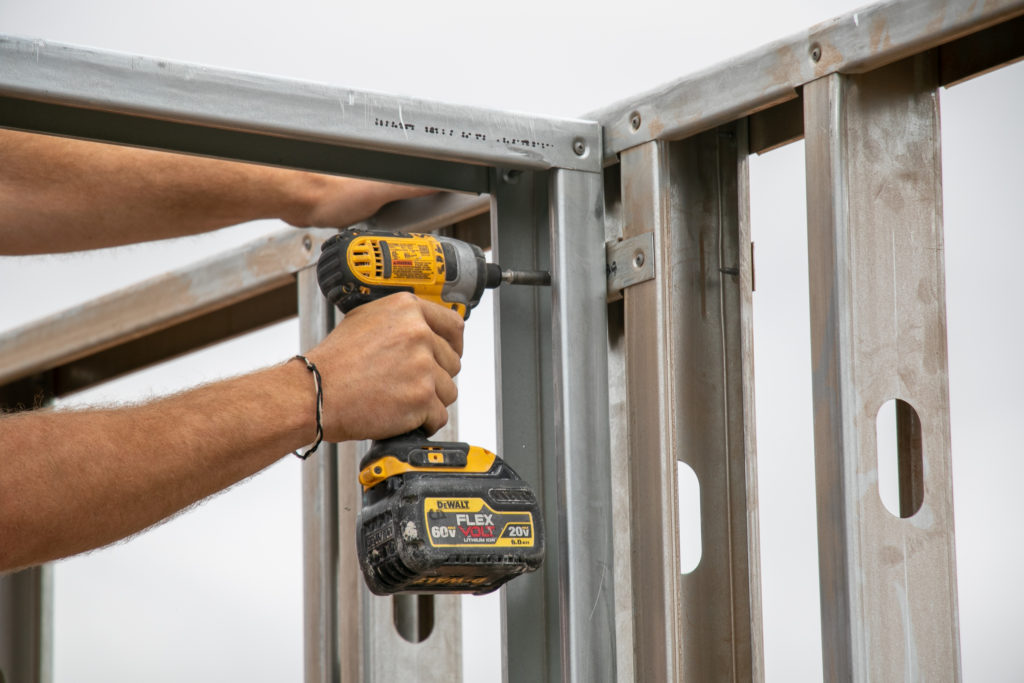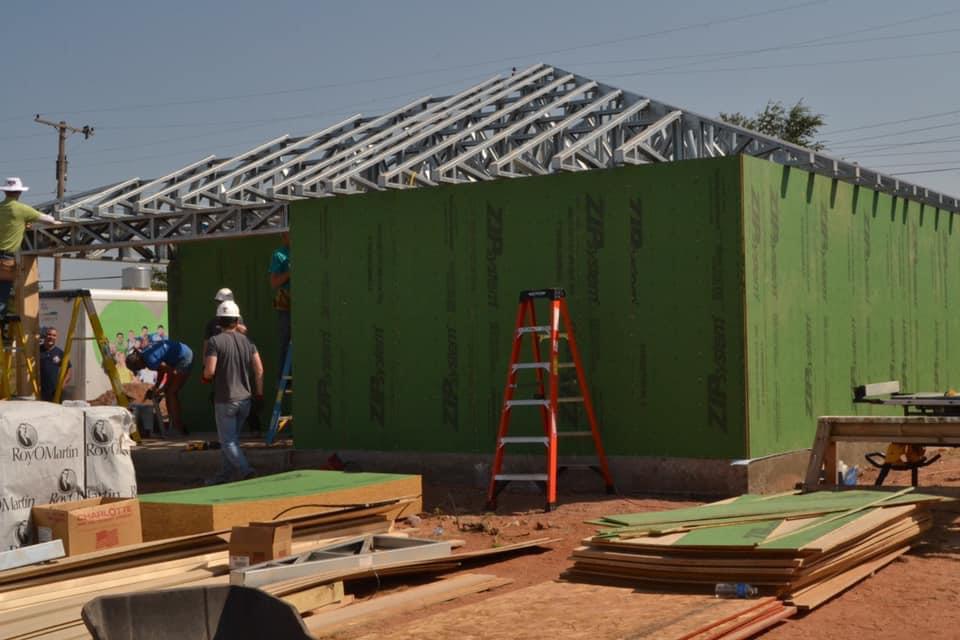How Cold-Formed Steel Framing Can Help Prevent Mold
How Cold-Formed Steel Framing Can Help Prevent Mold
Mold growth can be a terrible issue for owners and renters in older buildings, and good reason. Mold has been linked to several health problems. What is less widely mentioned is that mold development is not restricted to older structures. New building can also host potentially hazardous fungus. To keep future building occupants safe, consider mold from the start of your project and use a construction material that can assist protect against it, such as cold-formed steel (CFS) frame.

Cause for concern
Molds are fungus that reproduce by releasing spores into the air. Mold spores develop when they locate the correct circumstances – moisture, oxygen, and an organic material to feed on. Mold is prevalent in every habitat, both inside and outdoors, and there are 1,000 types of molds in the United States.
Mold spores in the air may be swallowed and given that Americans spend 90% of their time inside, mold exposure in confined environments is a legitimate cause for worry.
Molds are recognized allergy and irritant makers. Mold exposure can harm the eyes, skin, nose, throat, and respiratory systems of persons who are allergic to mold, and it can trigger asthma episodes in those who already have asthma. According to the Centers for Disease Control and Prevention (CDC), if mold is found on materials, suitable cleanup requirements and adequate containment should be followed to prevent exposure to building occupants. Taking preventative actions to restrict mold growth can enhance indoor environmental quality and the health and well-being of building occupants.

How mold infiltrates builders
Mold thrives in settings where building materials remain moist for longer than 48 hours and interior temperatures are moderate. Leaking pipes or roofs, precipitation seepage, floods, uncontrolled high relative humidity, and construction techniques that do not adequately protect building components from the environment can all cause moisture to accumulate in building materials.
While water incursion on some interior surfaces can be clearly discovered, other construction elements, such as timber members and wood framing buried below finish materials, may house undetected mold. Mold may eventually eat away at building materials, changing their appearance and smell. It has the potential to rot wood components and compromise the structural integrity of wood-framed buildings.
Because steel is not biological substance, CFS frame can withstand this gradual deterioration. This makes it an undesirable surface for mold to colonize and thrive on.
Furthermore, CFS will not warp or sag. Other materials may “creep” with moisture content, twisting, expanding, or shrinking. These changes might cause the building frame to sag or crack. When this happens, doors and windows may no longer close correctly, allowing moisture to enter. Using CFS, which remains straight and true, can help to mitigate this problem.
Why mold is a concern even in new buildings
Leaks and deteriorating water-barrier measures are often associated with older structures, but more recent changes in building rules and construction practices have also created opportunities for mold to thrive. Energy efficiency standards, which were introduced to the construction industry in the 1970s, need more securely sealed building envelopes. Moisture vapor indoors can get concentrated and develop breeding grounds for mold because low ventilation rates do not offer appropriate air movement and condensation management in these tightly sealed structures.
Furthermore, excessive temperatures are typically connected with climatic disasters such as floods, storms, and droughts, and these severe environmental changes can lead to mold and envelope degradation in contemporary structures.
Even the modern method of green building design and construction cannot ensure mold resistance. Despite being the nation’s first LEED (Leadership in Energy and Environmental Design)-certified museum in 2003, the state-of-the-art Mark Twain Museum in Hartford, Connecticut, suffered from mold infestation in 2015. Mold treatment charges were $1 million due to geothermal system issues and a leaking roof.
Indeed, others argue that some sustainable practices, such as the use of newer, untested materials, might produce conditions conducive to moisture penetration. In humid summer climates, the urge to boost ventilation by getting more external air into a structure directly connects to moisture concerns.
Preventing all moisture incursion is nearly impossible, regardless of whether the structure is old or new, but CFS can help reduce the sensitivity of buildings to mold. Because of its inorganic qualities, ventilation may be efficiently included into the design of CFS-framed structures, and energy efficiency can be maintained or enhanced. Furthermore, moisture cannot enter CFS members, providing further protection against mold formation.
Mold, if allowed to develop, can cause long-term problems that are costly to treat, have an influence on tenant well-being, and even lead to structural degradation. CFS is a fantastic alternative for producing a long-lasting, sturdy structure due to its strong mold resistance.
https://buildsteel.org/why-steel/durability/how-cold-formed-steel-framing-can-help-prevent-mold/

Legal
Outreach & Investment
Office/Plant Location
Reese Technology Center Hanger 92
212 Davis Drive
Lubbock Texas 79416
Our Services
- Building Components
- Design Services
- Building Kits
- CFS Framing
- Light Gauge Steel Framing Manufacturer
- Prefabricated House Frame Supplier And Manufacturer
- Prefabricated Panel Manufacturer
- Metal Framing Designer and Supplier
- Steel Frames Design And Supply
- Prefabricated Metal Frames
- Prefabricated Steel Frames
- Prefabricated Housing And Panels
- FrameCAD Manufacturer And Supplier
- FrameCAD And BIM Design Services And Supply
- Metal Stud Framing Supplier
- Texas Metal Stud Framing Supplier